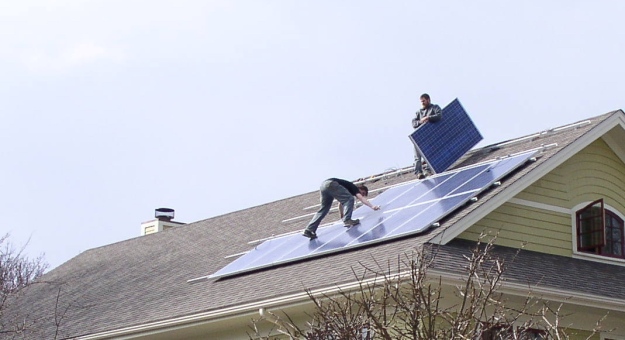By now we’ve all seen the latest news on NSTAR’s major rate increase that will take effect this winter in Newton and throughout the region.
Why is the rate increase happening? What can we do about it at the community level and household level?
The “popular press”, including the Boston Globe and New York Times, has explained in recent articles that the 30% NSTAR electrical utility rate increase (and National Grid 37% rate increase) are a result of a shortage of natural gas distribution in New England to supply homes, businesses and natural gas fired power plants during periods of heavy demand in the winter months.
As a result, natural gas power plants face higher “fuel” costs, which power plant operators pass on to electrical utilities, which in turn then pass these costs to electrical utility customers. Many experts forecast that the shortage of natural gas is at least a ten year problem in New England due to lengthy planning and approval timelines for new natural gas pipelines to transport natural gas into New England.
So, let’s take a closer look at NSTAR’s planned 30% rate increase. Let’s also take a look at how “retail” electrical utility rates are calculated for residential customers in Newton. Then, let’s think about what we can do about it at the local level and at the household level.
For Newton residents, the current NSTAR residential rate of approximately $0.18 per kilowatt hour (kWh) is one of the highest rates in the U.S. This current $0.18 per kWh rate is before calculating the planned 30% rate increase.
- 46% of the $0.18 per kWh rate that we pay is allocated to “transmission and distribution” charges (T & D). These T & D charges represent the cost to move electrons through regional electrical distribution systems and across local wires on poles. T & D costs also include other charges, such as utility overhead and profit, pension and healthcare obligations, and staffing costs. The major utilities in New England are for-profit, publicly traded companies which have provided strong returns to their shareholders.
- 51% of the $0.18 we pay is for “energy supply” charges paid to out-of-state and in-state power plant operators and power providers. The current shortage of natural gas, which is used to “fire” the majority of our power plants in New England, affects the energy supply cost category.
- The remaining 3% of the electrical utility cost structure consists of “transition charges” and energy efficiency & renewable energy program costs.
- The Globe and NY Times tell us that the 30% rate increase is due to the limited supply of natural gas distribution, which is partially correct. What the press does not make clear is that the utility industry’s T & D costs typically rise at a rate higher than core inflation. (Again, T & D charges are about 50% of our total electrical charges). Many in the industry feel that there is substantial deferred maintenance in local electrical utility networks, suggesting continued increasing T & D charges. Even if the 30% rate increase is partially reduced after the winter season, consumers should expect continued cost escalations due to the nature of utility T & D cost structures.
We should all reflect on how wasteful it is to ship electrical power from regional power plants over wires to Newton and then within the local distribution system inside Newton. Over 10% of electrical power is lost in utility transmission and distribution networks (Source: NY Public Service Commission & EPRI, 2012). This T & D loss is on top of the inefficiency of even the most modern natural gas fired electrical generation plants (50% thermal efficiency).
What can you do about rising utility costs? What can we, as a community, do? How can we make “structural” changes to the way energy is generated and consumed in our community?
Energy efficiency is a “layup”! You should absolutely take advantage of the free home energy audits, $2,000 of free insulation, LED lighting upgrades and other programs available through the State’s “MassSave” program:
Then, by adopting solar on your home or business, you can provide up to 100% of your annual home or business electrical needs. You can draw from the utility grid when needed and provide excess power back to the grid and your community during times of high production of solar power.
The great thing about electricity is that it flows to the nearest source of demand, so solar energy generated in Newton will stay in Newton! Dollars saved on home utility bills will also stay in Newton for the benefit of local merchants, your children’s college education and your retirement plan.
Residential solar with the Newton Solar Challenge is a financial “no brainer” for those whose homes are appropriate. Homeowners who take advantage of “solar ownership” through Newton Solar Challenge will be immediately “cash flow positive” when using a solar loan from a local bank (or) will receive a full payback on investment within five years if they choose to invest cash.
We are challenged as a community by a 30% rate increase, global warming, and a desire, but no clear plan, for energy independence. What can you do about it? How can you take action with your community? How can you support the City of Newton’s stated goal of a 20% energy reduction across the residential sector within the next five years?
Join us in the Newton Solar Challenge and go solar with your neighbors! To learn more about how we simplify the solar purchase process, provide preferred pricing for Newton residents using high-quality installers and American-made equipment, and make low-cost “solar loans” available for Newton residents, please visit us:
www.facebook.com/newtonsolarchallenge


Recently on Twitter